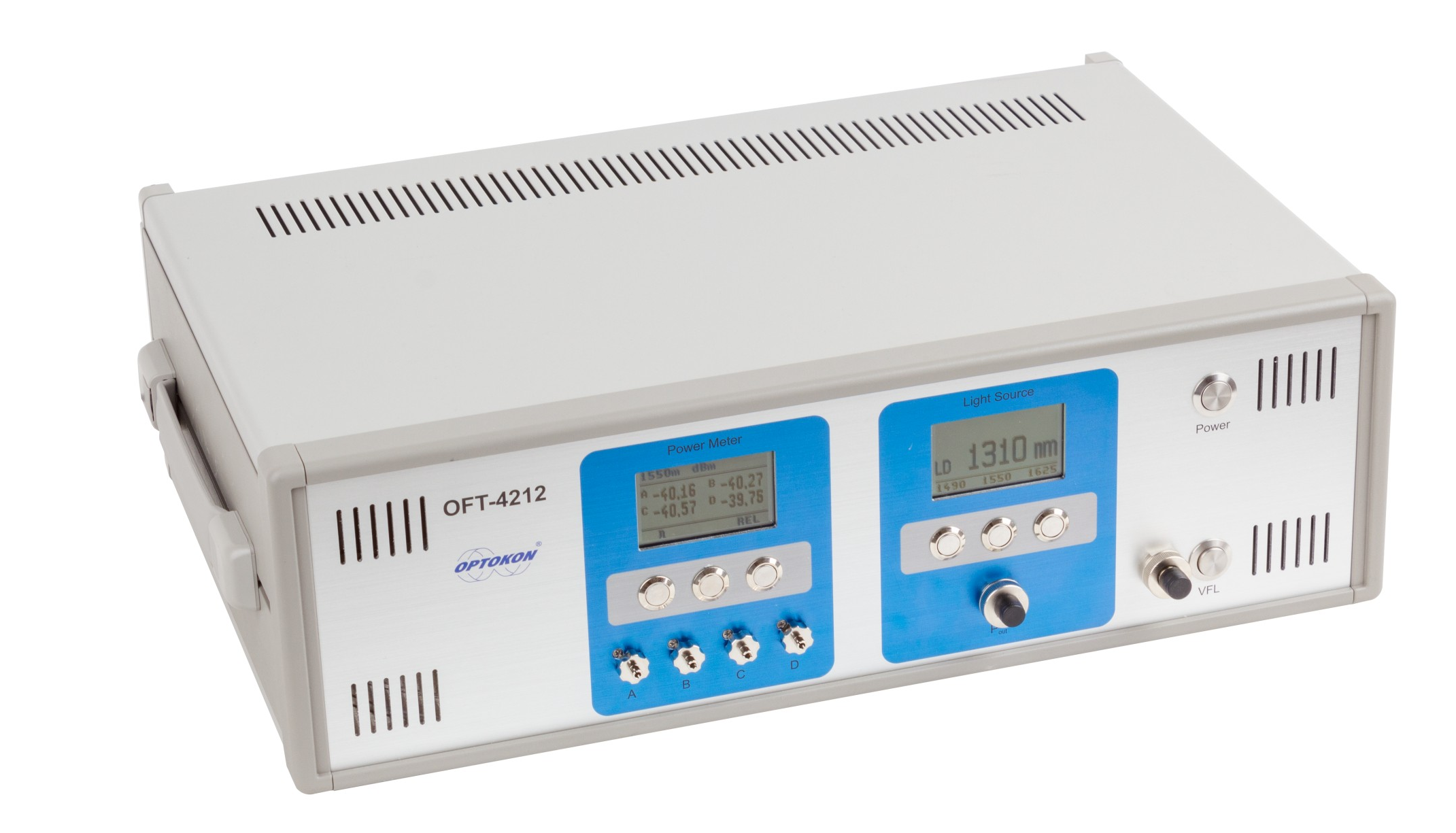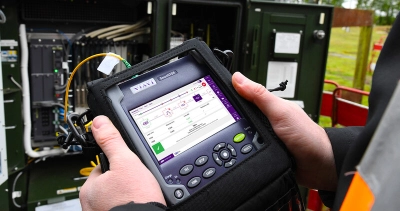Key benefits for integrating an optical measurement system into modern manufacturing
Understanding Just How an Optical Measurement System Boosts Precision in Industrial Applications
Optical measurement systems play an essential duty in boosting accuracy across various industrial applications. By leveraging sophisticated technologies such as laser interferometry and 3D imaging sensing units, these systems provide high-resolution, non-contact measurements. This capacity lessens the threat of damaging sensitive parts while guaranteeing precision. The influence of these systems prolongs past mere measurements. Discovering their advantages, applications, and future fads discloses a complicated landscape of advancement and challenges that advantages better exam.
The Essentials of Optical Measurement Systems
Optical measurement systems work as essential tools in different commercial applications, providing specific information collection and analysis. These systems use light as a primary ways of measurement, leveraging optical concepts to examine dimensions, placements, and surface qualities of things. They incorporate components such as lasers, video cameras, and sensing units, which interact to catch high-resolution images and data.
The technology allows non-contact measurements, reducing the danger of damaging sensitive parts. Optical measurement systems are versatile, finding energy in quality control, assembly confirmation, and dimensional evaluation throughout various sectors. They are specifically efficient in atmospheres where typical measurement strategies may drop short, such as measuring complex geometries or observing fast movements.
As markets remain to progress, the combination of optical measurement systems will remain essential for guaranteeing accuracy and efficiency, inevitably improving product top quality and functional efficiency in numerous producing processes.
Trick Technologies Behind Optical Measurement
Trick modern technologies such as laser interferometry strategies and 3D imaging sensors play an essential role in the efficiency of optical measurement systems (optical measurement system). These technologies allow exact dimensions and thorough evaluation in various industrial applications. Comprehending their performances is necessary for taking advantage of the full possibility of optical measurement systems
Laser Interferometry Techniques
Numerous laser interferometry methods have actually reinvented the field of optical measurement, providing extraordinary accuracy and accuracy in various commercial applications. These techniques use the interference of coherent light waves to measure distance, displacement, and surface area abnormalities with nanometer-level precision. Common techniques include Michelson interferometry, which divides a beam and analyzes phase shifts, and Fabry-Pérot interferometry, known for its high resolution in gauging small adjustments. Furthermore, laser Doppler interferometry uses regularity changes to assess rate, making it very useful in dynamic dimensions. The flexibility of these methods permits their assimilation right into diverse manufacturing procedures, boosting top quality control and making sure adherence to rigorous resistances. As an outcome, laser interferometry remains to play a vital duty ahead of time commercial measurement criteria.
3D Imaging Sensors
Developments in measurement innovation have actually caused the advancement of 3D imaging sensing units, which play a significant role in optical measurement systems. These sensing units capture three-dimensional information with numerous techniques such as triangulation, time-of-flight, and structured light. By properly reconstructing the shape and measurements of objects, 3D imaging sensors boost the accuracy of dimensions in commercial applications. They offer real-time feedback, facilitating high quality control and making certain that components satisfy strict requirements. Furthermore, their ability to operate in difficult settings, such as differing illumination conditions, makes them indispensable in manufacturing processes. As sectors significantly take on automation, the combination of 3D imaging sensors into optical measurement systems is anticipated to drive further enhancements in effectiveness and precision.
Benefits of Optical Measurement in Industry
Standard measurement techniques have actually long been the standard in commercial settings, optical measurement systems supply considerable advantages that enhance precision and efficiency. These systems use light to capture information, resulting in high-resolution measurements that are commonly unattainable with conventional techniques. The non-contact nature of optical measurements minimizes the danger of damaging delicate parts during the assessment process. Additionally, the speed of optical dimensions permits fast data acquisition, assisting in timely decision-making in hectic commercial atmospheres.
Optical systems are adaptable, efficient in determining numerous products and forms without the requirement for substantial recalibration. This flexibility adds to enhanced workflow and efficiency. Furthermore, the automation capacity of optical measurement systems lessens human mistake, making sure constant high quality control. On the whole, the assimilation of optical measurement innovation represents a progressive shift in the direction of boosted precision and dependability in industrial operations, ultimately leading to improved product quality and operational efficiency.
Applications of Optical Measurement Systems

Optical measurement systems play a crucial function in enhancing production procedure optimization by offering specific information for decision-making. These systems assure quality assurance assurance via real-time tracking and evaluation of manufacturing metrics. As sectors progressively take on these innovations, their influence on performance and product reliability comes to be noticeable.
Production Process Optimization
Enhancing production procedure efficiency is significantly dependent on the i loved this combination of optical measurement systems. These systems offer real-time information on various parameters, allowing makers to evaluate procedures with a high level of precision. By enabling accurate measurements of dimensions, surface features, and product residential properties, optical measurement systems facilitate the recognition of ineffectiveness and traffic jams in assembly line. The immediate responses from these systems encourages designers to make enlightened choices, causing optimized machining, setting up, and finishing processes. Additionally, the capacity to check conditions continuously enables adaptive changes, decreasing downtime and waste. As sectors aim for better performance and decreased operational prices, optical measurement systems emerge as read the article vital devices for enhancing production procedure optimization.

Quality Assurance Assurance
The assimilation of optical measurement systems substantially influences quality assurance assurance in industrial setups. These systems provide precise and non-destructive measurements, enabling makers to find issues and variances early in the production process. By utilizing advanced imaging strategies, such as laser triangulation and interferometry, optical measurement systems guarantee that parts satisfy rigid specifications. This assists in real-time tracking, lowering waste and lessening the danger of damaged items reaching the market. Furthermore, the information accumulated can be analyzed to improve manufacturing procedures even more, bring about continuous enhancement. Ultimately, the adoption of optical measurement systems enhances dependability and consistency in quality assurance, cultivating higher self-confidence among stakeholders and consumers alike in the end products supplied.
Situation Studies: Effective Implementations
Countless industries have actually effectively incorporated optical measurement systems to boost their functional performance and item quality. For example, in the automobile sector, a popular supplier adopted a laser triangulation system to monitor the placement of vehicle elements. This application substantially decreased setting up errors, bring about enhanced security and minimized costs.
In the aerospace sector, a leading airplane producer used optical metrology for precision measurements of generator blades, accomplishing resource a reduction in manufacturing resistances and better performance requirements.
A consumer electronics company implemented optical measurement innovation during the manufacturing of smart device displays, resulting in improved quality control and a decline in defective products.
These situation studies highlight how optical measurement systems not just boost accuracy however also add to overall operational performance, demonstrating their worth throughout different industries. By dealing with certain needs, these systems have actually proven to be vital tools in contemporary commercial applications.
Obstacles and Limitations of Optical Measurement
While optical measurement systems provide substantial benefits in various industrial applications, they are not without their obstacles and constraints. One major problem is level of sensitivity to environmental problems, such as temperature variations, humidity, and dust, which can detrimentally impact measurement accuracy. In addition, optical systems frequently require exact positioning and calibration, making them susceptible to human mistake throughout setup and procedure. Another limitation is the capacity for interference from ambient light, which can distort dimensions and necessitate complicated filtering system techniques. Specific products and surfaces may offer problems, as reflective or clear attributes can lead to irregular readings. The cost of premium optical parts and systems can likewise be an obstacle for some sectors, limiting widespread fostering. Specialized training is commonly needed for workers to properly run and keep these systems, including to the general complexity and functional obstacles.
Future Patterns in Optical Measurement Technology
As improvements in innovation continue to form commercial procedures, the future of optical measurement systems is positioned for considerable development. Emerging patterns suggest a change towards improved integration of artificial knowledge and artificial intelligence, enabling systems to examine data in real-time, determine patterns, and improve decision-making processes. On top of that, the advancement of miniaturized sensors and progressed optics is expected to result in more compact and versatile measurement options, making them obtainable for a wider series of applications.
Furthermore, the consolidation of 3D imaging and high-resolution capabilities will enable for extraordinary accuracy in dimensions, which is important for markets such as aerospace and automotive. The press for automation and Market 4.0 will likewise drive the need for optical measurement systems that can conveniently user interface with various other modern technologies. As these patterns unfold, optical measurement systems will likely end up being important to attaining better performance and accuracy across different commercial fields.

Regularly Asked Concerns
Exactly How Do Optical Measurement Systems Contrast to Traditional Measurement Methods?
Optical measurement systems supply greater accuracy and speed compared to standard techniques - optical measurement system. They lessen human error, enhance information collection effectiveness, and offer real-time results, making them significantly preferred in numerous commercial applications for specific dimensions
What Industries Benefit the Most From Optical Measurement Systems?
Optical measurement systems considerably profit sectors such as aerospace, automobile, and electronics. Their capacity to give high-precision dimensions improves quality assurance, decreases manufacturing errors, and boosts total effectiveness, making them vital in competitive manufacturing settings.
Can Optical Measurement Systems Be Custom-made for Certain Applications?
Optical measurement systems can without a doubt be customized for particular applications. By readjusting criteria such as wavelength, resolution, and calibration strategies, sectors can customize these systems to satisfy unique precision and accuracy needs successfully.
What Is the Upkeep Demand for Optical Measurement Systems?
The maintenance requirements for optical measurement systems commonly include routine calibration, cleansing of optical parts, and software program updates. Sticking to these methods assurances accuracy, dependability, and durability of the measurement equipment in different applications.
Exactly How Do Ecological Factors Affect Optical Measurement Accuracy?
Environmental elements, such as temperature level variations, humidity, and dirt, substantially impact optical measurement precision. These elements can misshape light paths and hinder sensor readings, eventually jeopardizing the dependability and accuracy of measurements in industrial settings.